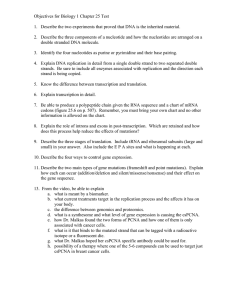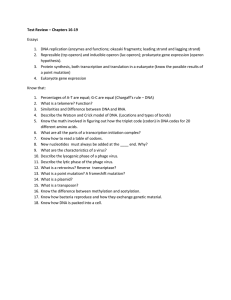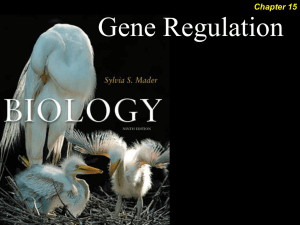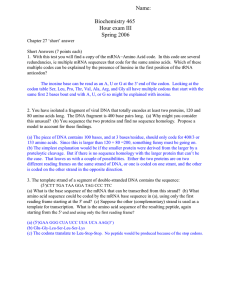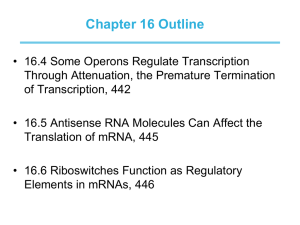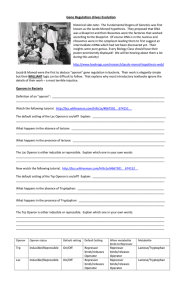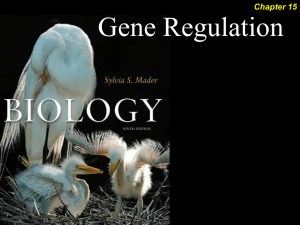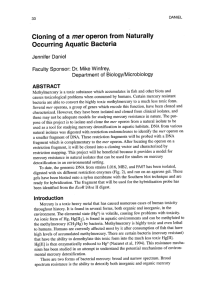AP Biology EXAM REVIEW Genetics
advertisement
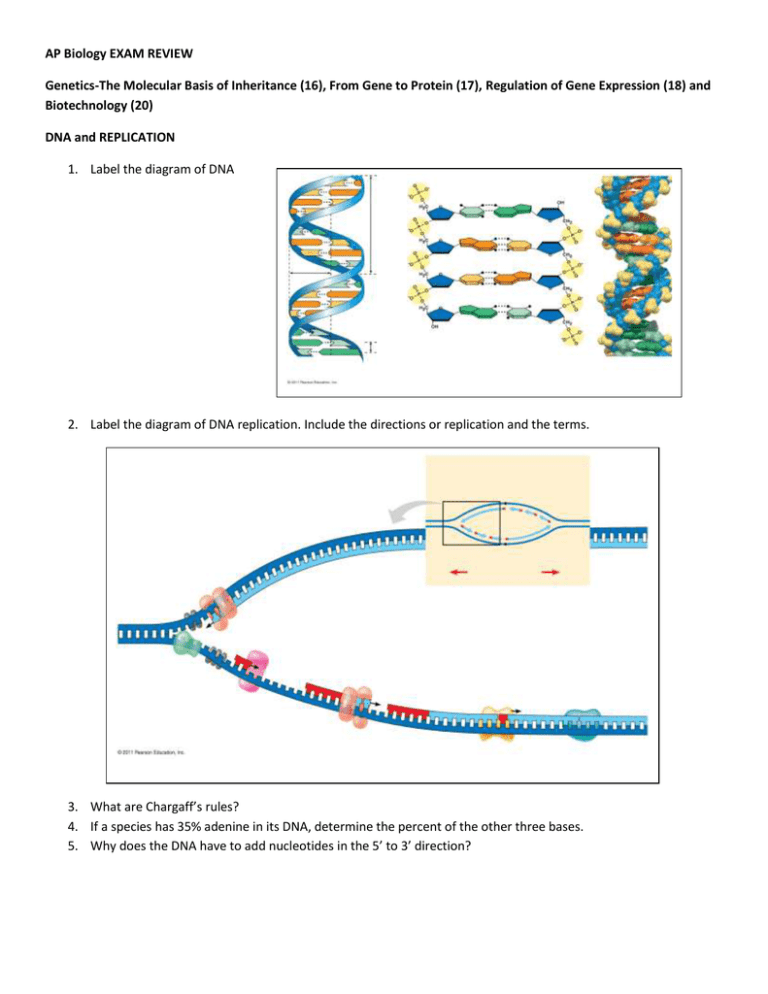
AP Biology EXAM REVIEW Genetics-The Molecular Basis of Inheritance (16), From Gene to Protein (17), Regulation of Gene Expression (18) and Biotechnology (20) DNA and REPLICATION 1. Label the diagram of DNA 2. Label the diagram of DNA replication. Include the directions or replication and the terms. 3. What are Chargaff’s rules? 4. If a species has 35% adenine in its DNA, determine the percent of the other three bases. 5. Why does the DNA have to add nucleotides in the 5’ to 3’ direction? PROTEIN SYNTHESIS 6. What occurs during transcription? 7. What occurs during translation? 8. What is the genetic code and why is said to be universal? 9. List the highlights of the three stages of transcription. a. Initiation b. Elongation c. Termination 10. What happens to the transcript RNA before it leaves the nucleus? 11. Identify the roles of the players of the translation process. a. Transfer RNA b. Aminoacyl-tRNA synthetase c. Ribosomes 12. Identify and briefly describe the steps of translation. Initiation… Elongation… Termination… 13. Complete the diagram below to show how proteins are made. 14. How does protein synthesis differ between prokaryotes and eukaryotes? 15. Define point mutations. 16. Define mutations that are: a. Missense b. Nonsense c. Insertion or deletion Prokaryote Gene Expression 17. Locate the control of the tryp operon using the following diagram (repressible operon) and explain how it works. 18. Use the diagram of the lac operon to outline how it regulates glucose levels as an inducible operon. 19. Describe the effect of each of the following control mechanisms in eukaryotic cells. a. DNA methylation b. Histone acetylation c. Transcription factors d. Control elements e. Enhancers BIOTECHNOLOGY 20. What is the function of restriction enzymes in bacteria? 21. How are DNA fragments of different sizes separated? 22. What is meant by “recombinant DNA technology?” 23. What are plasmids and how are they used in transformations?
